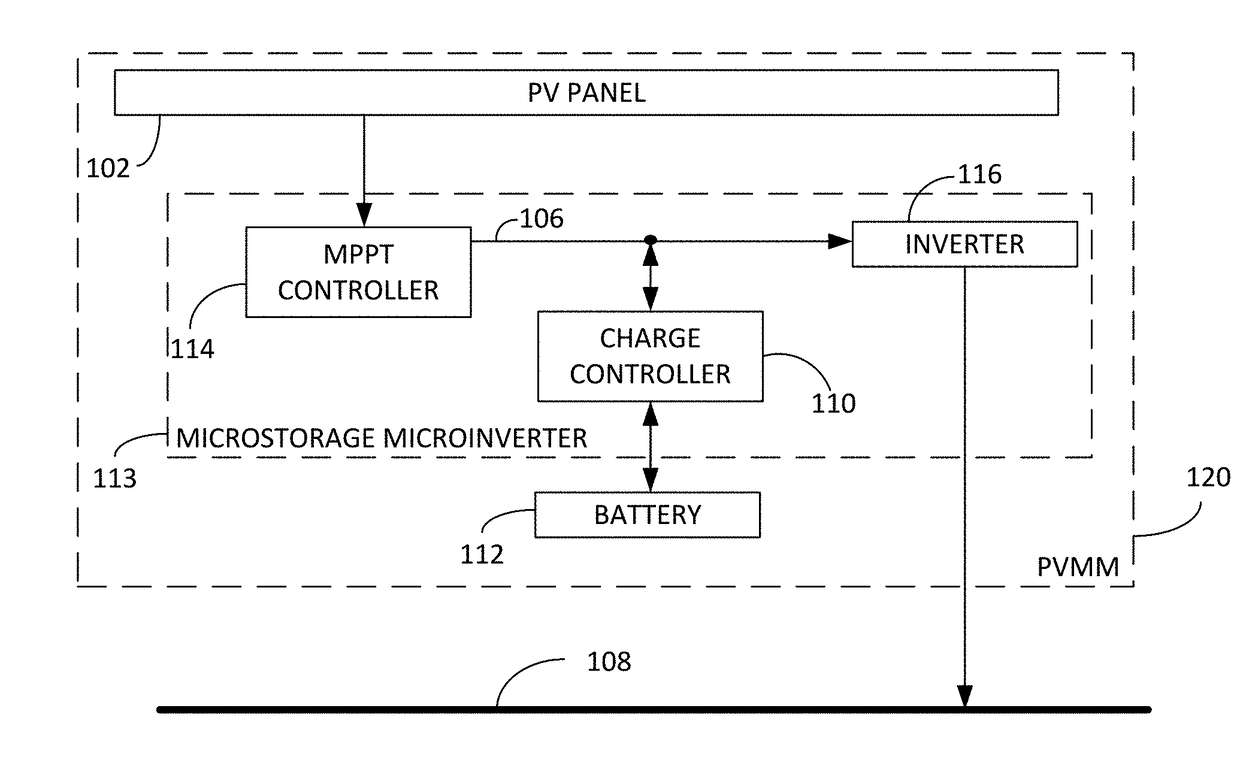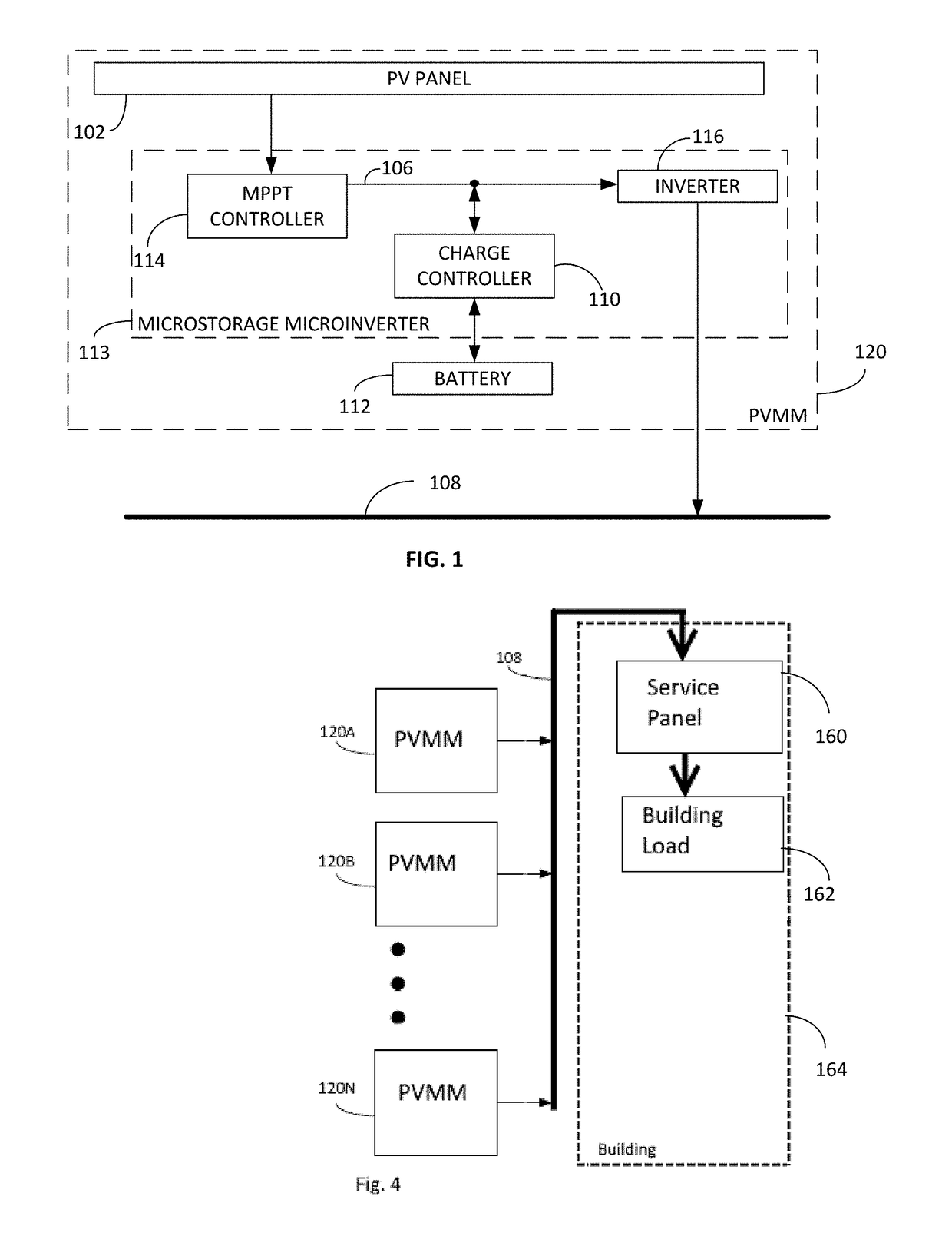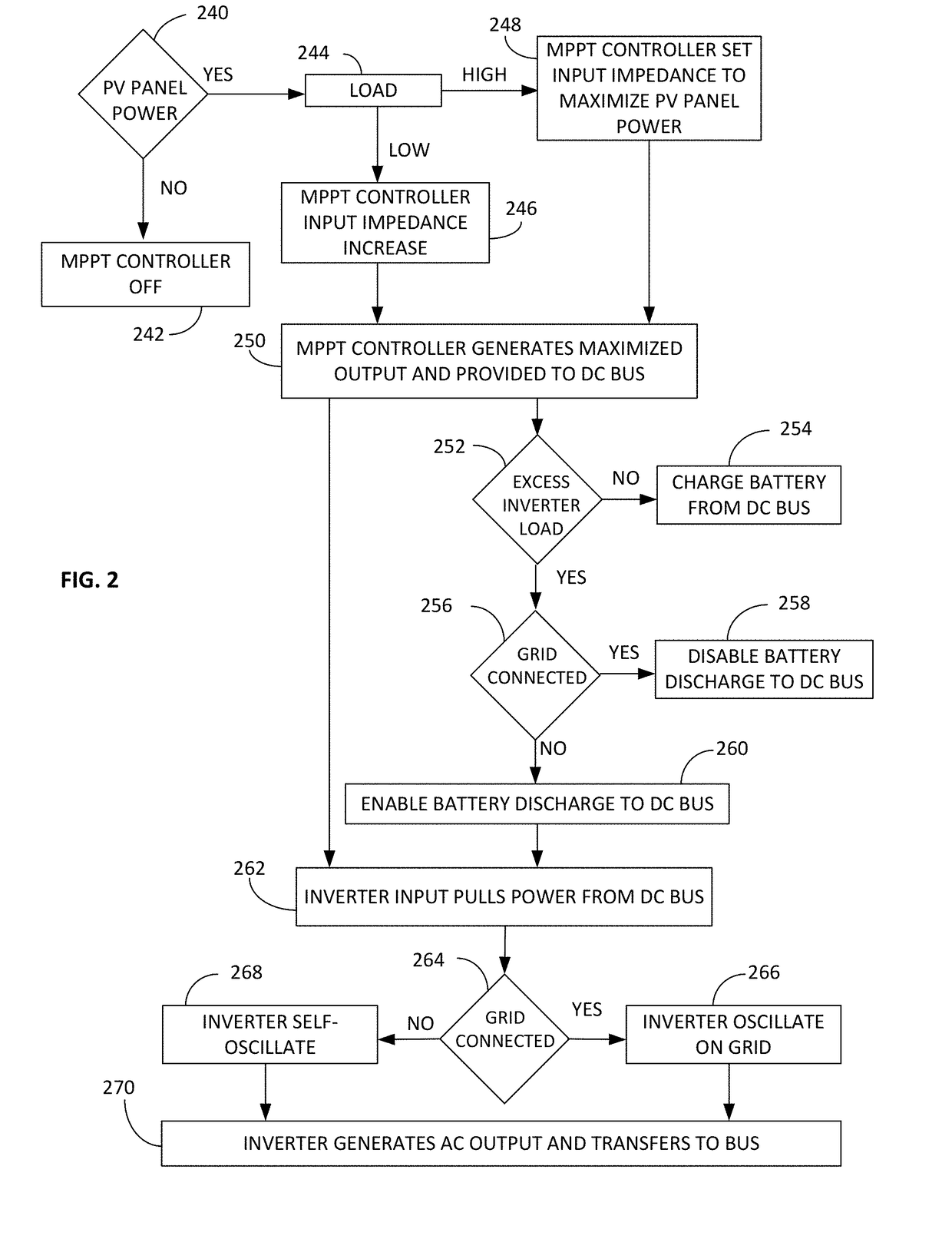Photovoltaic microstorage microinverter
a micro-inverter and photovoltaic technology, applied in the direction of dc-ac conversion without reversal, emergency power supply arrangement, transportation and packaging, etc., can solve the problems of inconvenient operation, and inefficient control of pv power collection by string inverter. achieve the effect of reducing costs and better control of pv power
- Summary
- Abstract
- Description
- Claims
- Application Information
AI Technical Summary
Benefits of technology
Problems solved by technology
Method used
Image
Examples
Embodiment Construction
[0023]The present PV electric system overcomes the deficiencies of the prior art in providing a per-PV-panel solution for controlling and distributing PV power. The present PV system further improves system efficiency and control through the controller algorithms, scalability, and distributed energy storage.
[0024]FIG. 1 illustrates the present invention of a PV electric system 120. The system of FIG. 1 includes the PV panel 102, the MPPT controller 114, the charge controller 110, the battery 112, the DC bus 106, and the inverter 116, as well as the AC bus 108. The system 120 is one embodiment of a photovoltaic microstorage microinverter (PVMM). Furthermore, as referred herein, the MPPT controller 114, the charge controller 110, the DC bus 106 and the inverter 116 collectively make up the microstorage microinverter 113.
[0025]It is recognized by one skilled in the art that further elements and connectivity means may be utilized and incorporated into the present system, whereby these m...
PUM
 Login to View More
Login to View More Abstract
Description
Claims
Application Information
 Login to View More
Login to View More - R&D
- Intellectual Property
- Life Sciences
- Materials
- Tech Scout
- Unparalleled Data Quality
- Higher Quality Content
- 60% Fewer Hallucinations
Browse by: Latest US Patents, China's latest patents, Technical Efficacy Thesaurus, Application Domain, Technology Topic, Popular Technical Reports.
© 2025 PatSnap. All rights reserved.Legal|Privacy policy|Modern Slavery Act Transparency Statement|Sitemap|About US| Contact US: help@patsnap.com



